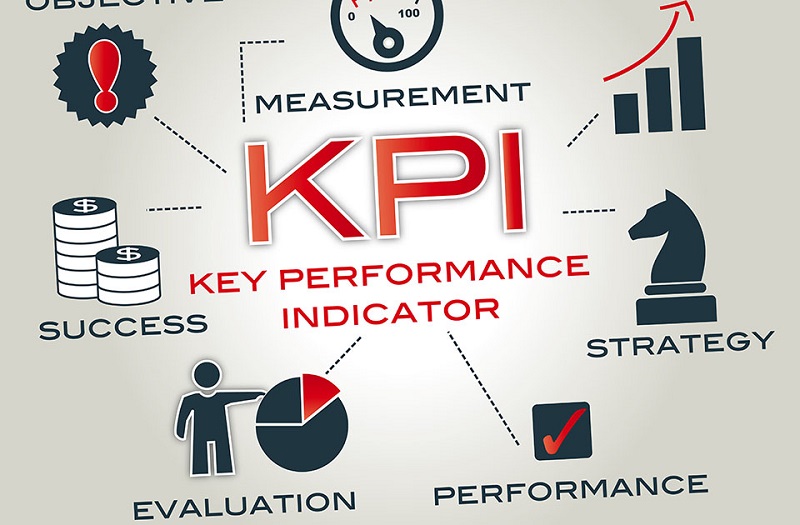Managing email marketing campaigns does not stop at simply sending emails to users who subscribe to the database, but it is equally important to the next stage of reading and analyzing data. Let’s see what are the KPI to be analyzed in order to properly evaluate the activities carried out…
How to take advantage of the email marketing company benefit? Let’s find out right away with analyzing step by step the various following parameters: 5 indicators to be taken into account to improve the results in a simple and immediate!

#1- Click Percentage
Since we are explaining how to do email marketing in the right way, we must say a few words to describe the importance of the parameter indicating the so-called percentage of clicks: what is called click-through rate or CTR is the number of recipients who made one, or more, click on the links present in the communication.
The formula to calculate the CTR is:
(Total or unique click click ÷ number of emails delivered) * 100
Example:
(500 ÷ 10,000 Total clicks delivered mail) * 100 = 5% of clicks
The percentage of clicks is critical, both because it allows you to understand the level of interest shown by the users against a specific message, and because, by comparing the data over time, CTR provides statistics that can help you understand preferences and behaviors of the recipients.
#2- Conversion Rate
Another email marketing KPI to check carefully is the one related to the conversion rate (conversion rate), which corresponds to the percentage of recipients who, in addition to having clicked on at least one link in the email, it also performed the action desired by the sender (for example, the user has purchased a product or filled out the request information form).
The formula to calculate the conversion rate is:
(Number of people who complete the desired action ÷ number of emails delivered) * 100
Example:
(400 people who completed the desired action ÷ 10,000 emails delivered) * 100 = 4% of the conversion rate.
It is a KPI that allows you to track exactly how many, among all users reached through the campaign, they actually run the desired action by the sender. Is, therefore, important to assess both the effectiveness of campaigns activated, both the interest of users reached towards the products / services offered.
#3- Bounce Rate
In terms of email marketing the bounce rate or bounce rate , identifies the percentage of e-mail messages sent but not delivered to the recipients.
The formula to calculate the bounce rate is:
(Total number of undelivered emails ÷ number of emails sent) * 100
Example:
(75 ÷ 10,000 undelivered emails sent emails) * 100 = 0.75% of bounce rate
To be specified that there are two different types of bounce rate:
- Soft bounce : it is the result of a temporary problem with a certain email address (for example, email the filled recipient);
- Hard bounces : it is the result of a permanent problem with a certain email address (for example, closed account, incorrect or non-existent). It is preferable not to continue to include in sending email lists hard bounce once identified. ISPs (Internet Service Providers, or ISPs), may interpret this behavior as spam activities, thus penalizing the sender (e.g. Bad reputation assignment to the email sender).
#4- Growth rate
Understanding how to make the most of email marketing and what are the best strategies to be implemented is not easy, but the numbers are in our help. In analysis of the performance of email marketing campaigns, another index to be monitored constantly is the List Growth Rate, i.e. the rate of growth (in volume, i.e. number of registered users) of the email lists of users available.
Keeping under control the growth, or decline, of sending lists you can see how changes over time the pool of potentially reach users with communications.
The formula to calculate the growth rate is:
[(Number of new subscribers – number of unsubscribed or complaints by e-mail spam) ÷ total number of email addresses in the list] * 100
Example :
[(500 new students – 100 unsubscribed or complaints by e-mail spam) ÷ 10,000 email addresses in the list] * 100 = 4% of growth rate.
The goal should be, of course, to help people to grow the lists in order to increase the audience available for communications and counter the natural decline (it is estimated an average decline of lists by 22.5% every year) where all databases undergo with the passage of time.
#5- Overall ROI
To consider carefully is certainly the ROI overall, which corresponds to the total return generated by investments in the country.
The formula to calculate the ROI is total:
[(Revenues campaign – campaign costs) ÷ campaign costs] * 100
Example :
Revenue = $ 150
$ 100 Costs =
[($ 105 – $ 100) / $ 100] * 100 = 50%
The return on investment is 50%.
This parameter is essential to assess whether the investment was fruitful and led to the desired results. According to the result obtained can be evaluated any corrective actions for future investments.
Of course, each company has specific goals to be achieved, therefore, the determination of specific KPI to be considered during the analysis must be made according to the individual reality.
In general, these are the most relevant KPI that can be used in the examination of email marketing campaigns. Excellent base to make the most of one of the main strengths of the pipeline online marketing points: measurability of performance.
